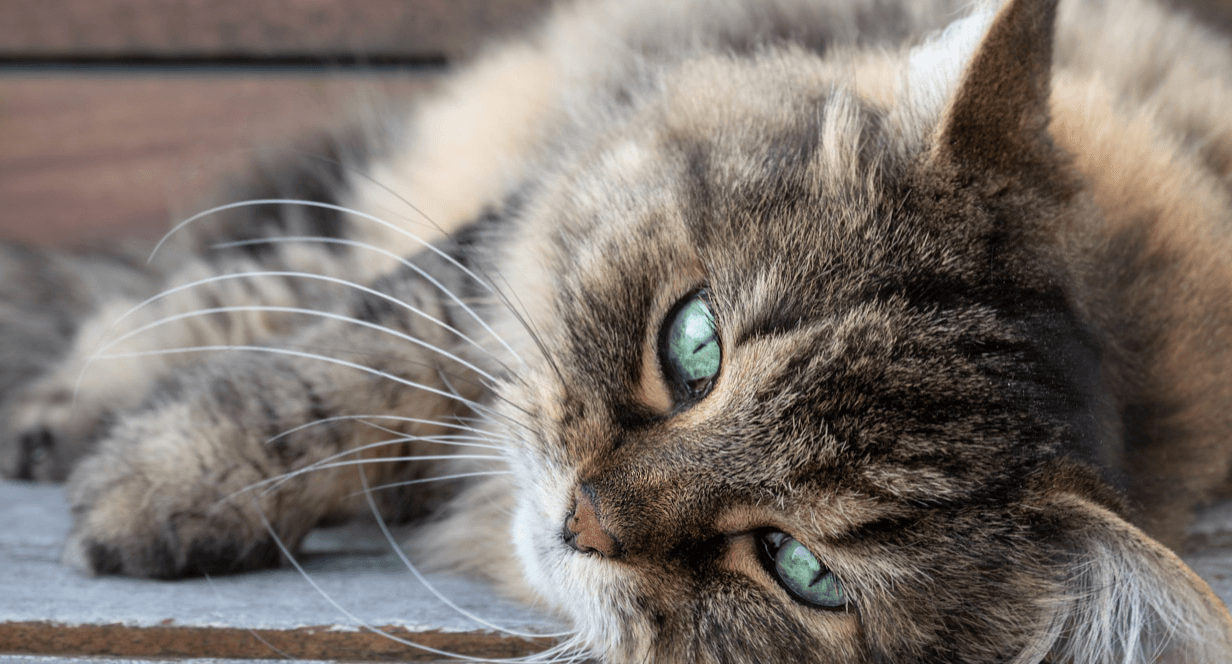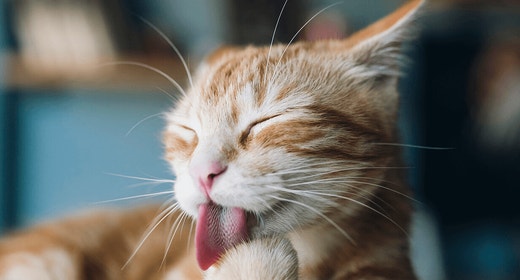

No matter how much you want them to stay adorable kittens, every cat eventually grows up to become an adorable senior. In fact, thanks to improvements in medical care and nutrition, cats are now living longer and healthier lives than ever before.
But as they age, your cat’s needs can change. By staying aware of the common signs of aging in cats and making a few adjustments to help them stay comfortable, you can turn your cat’s older years into their golden years.
Every feline is unique, but cats are usually considered senior once they reach 7 years old. Your older cat isn’t going to start leaving the blinker on or hiking their pants up to their armpits, but there are signs that may indicate your cat is getting on in years.
Older cats often eat less as their senses of smell and taste diminish. Sudden weight loss or gain could be a sign that something is off.
We all know cats love to sleep, but if yours is sleeping more than usual and doesn’t show the same interest in playing or other activities, it could indicate lower energy levels. Not being able to jump or climb to their favorite spots could be a sign of arthritis as well.
It’s a good idea to check your older cat’s teeth more often, looking for any changes in appearance. If they’re pawing at their mouth or aren’t eating as much, it could mean something is amiss. If you suspect there’s an issue, consult your vet.
With a few simple changes, you can keep your older cat happy and comfortable for many years to come — here’s how.
It can be harder for older cats to groom themselves as thoroughly as before. You can lend a helping hand by giving them regular brushings. Make sure to keep their nails trimmed, too. It’s a great way to spend some extra quality time together.
After years of leaping onto the kitchen counter when you weren’t looking, your senior kitty might have trouble getting to their favorite spots. You may want to place a ramp or folding steps near their favorite couch or bed so they don’t have to jump as much. Make sure they have easy access to their food and litter box, too. Adding a litter box on each floor of your house can help prevent accidents.
Older cats love their routines. The more you’re able to keep things consistent and predictable, the calmer and less frightened they’ll be.
One cat year is like four human years, so a lot can happen in that span, especially in older cats. More frequent vet exams can detect health issues before they become serious.
Cats crave warmth. Make sure your grandcat has access to a number of sunny spots or heating vents to keep them toasty. Leave comfortable, warm blankets around your home for lounging, and consider bumping up the thermostat a degree or two for them — even though their favorite furnace will always be your lap.


An upset stomach is more common in cats than you might think. But how can you tell if it's a serious problem?
Every cat owner recognizes the warning signs of an upset feline stomach: the mournful meow, gagging, and heaving retch. But in a flash, the cat seems to snap back to good health while you're left scrubbing the carpet.
The scenario is a familiar one for Cynthia Bowen of Cleveland, Ohio. As the owner of four Maine Coons, Bowen has cleaned her share of messes. 'It would happen every couple of months or so,' she says. 'Otherwise, they were perfectly healthy.'
Although it's not a pleasant subject, vomiting is something cats seem to do almost on cue. Many cat owners accept this as a natural part of owning a pet, but it doesn't have to be that way. Knowing what triggers an upset stomach and what you can do about it will make for a better relationship with your cat.
Repeated cat vomiting should never be ignored because it can lead to dehydration. But, because vomiting is common in cats, how do you know what's normal? 'A general guideline is that if the cat is vomiting one to three times a month, we consider this 'normal,'' says Dr. William Folger, a DVM from Houston.
He considers it serious if the vomiting occurs twice daily for two or three days. If your cat stops eating, seems to have stomach pain, or retches continuously, or if there's blood in the vomit, take her to a veterinarian. And, as always, if you're suspicious that a lingering problem could be harmful to your pet, call your veterinarian. A visit to the office can help relieve your cat's discomfort and your worries as well.
Many owners attribute their cat's vomiting to hairballs, but that's not the only culprit. 'It's careless to assume that most cases of vomiting in cats are due to hairballs,' says Dr. Folger. Two other frequent causes of an upset stomach are:
Eating too fast. Cats sometimes eat too much, too fast. When the stomach wall expands too quickly, a signal is sent to the brain to cause regurgitation. In these cases, the mess on your floor is from regurgitation, not actual vomiting. When a cat regurgitates, he brings up fluid and food from his esophagus by opening his mouth–unlike vomiting, where there's gagging and retching. Regurgitated food is still formed, and may smell fermented. 'Cats that eat too quickly because they are gluttonous or stressed by food bowl competition can regurgitate right after eating,' says Dr. Sara Stephens, a DVM from Montana. But don't assume regurgitation is always a case of eating too fast. It could be caused by esophageal problems, obstruction of the digestive tract, hairballs, or dehydration. If you've forced your cat to eat slowly and he still has problems, contact a veterinarian.
Curiosity. Grass, carpet, and toilet paper are just a few things cats may digest and later vomit. The vomiting is a protective mechanism–nature's way of cleansing your cat’s system. Sometimes, though, curiosity can lead to more serious problems. String, toy parts, and feathers are favorites of playful felines and can lodge in the stomach or intestine, causing repeated vomiting and severe distress. If your cat exhibits these symptoms, take her to a veterinarian immediately; surgery is often necessary to remove the object.
Often, owners accept their pet's vomiting as a natural part of their behavior, but just because cats seem to have more than their fair share of tummy troubles doesn't mean you have to sit idly by.
One simple preventative measure is to get your fast-eating cat to slow down or to simply eat less. Stephens recommends smaller portions, elevating your cat's food dish slightly, or putting an object, such as a ball, into the dish. The cat will be forced to eat around the ball, and thus her intake will be slowed. If you do this, make sure the ball isn't small enough to swallow. And you may need to feed cats in a multiple-cat household at different times and places to reduce competitive eating.
If simple solutions don't work, watch your cat's eating behavior and reactions. Bowen, for example, tried changing her cats' diets. 'Since switching to IAMS®, they rarely throw up,' Bowen says.
'Usually, when you change to a higher-quality diet, there is no problem,' Stephens says. Here are some tips for helping make sure your cat's change is as successful and comfortable as possible:
Go slowly. Make the transition gradually to allow your cat time to adjust. 'Make sure the cat eats something every day,' Stephens advises. 'A cat that quits eating suddenly can develop liver problems.'
Measure up. How much should you feed? Your cat's age, sex, breed, activity level, and overall health need to be taken into consideration. Talk with your veterinarian, then read the manufacturer's recommendations. Premium foods like IAMS cat foods are more nutrient-dense than many non-premium diets, so don't be surprised if the recommended amounts seem low.
Pay attention. Beyond careful measuring, also regularly weigh your cat and adjust the feeding amount accordingly after switching to a premium food. Your cat may appear happy if you overfeed him. But over time, he may become overweight. Tummy troubles can be in the past with your veterinarian’s help and a little effort on your part.